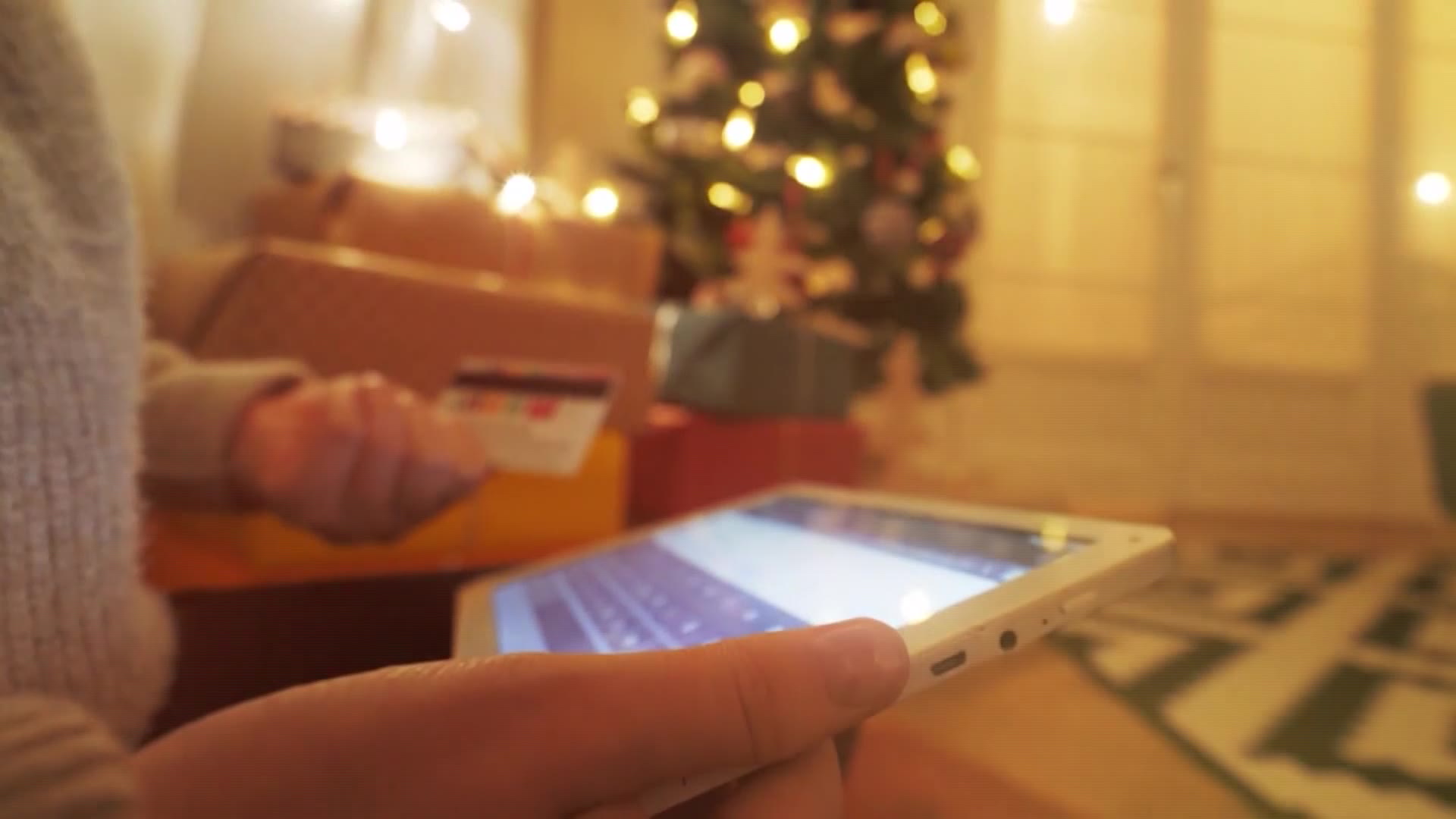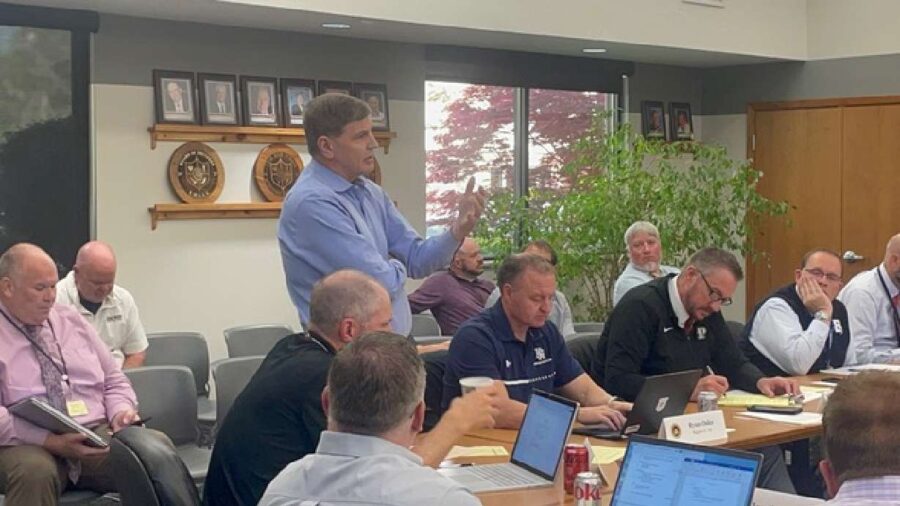Social Distancing For Musicians: A Quick Guide To Low-Latency Audio
Nov 15, 2020, 9:50 PM | Updated: Nov 16, 2020, 5:05 pm
SALT LAKE CITY, Utah – Every April, double bassist Robert Matheson and a colleague put on a concert at Dixie State University where they teach.
This year he realized to play together, they were going to need something new, something that’s now of great interest to everyone from choir directors to music teachers to jazz musicians — a low-latency, high quality audio connection.
“I’d heard about it for quite a few years,” he says. “I’d always been curious about it, but come March, it kinda became a necessity.”
Right now, Zoom is the go-to app for long-distance meetings, but not music.
The problem is latency, the delay between when a sound, like a note, is produced and when someone on the other end of a Zoom call, hears it. Latencies on Zoom can typically be 100- 150 milliseconds. Since sounds travels at 1,129 feet per second, that’s like two musicians trying to play together while standing 112 to 169 feet apart.
In an art form where time, even just a few milliseconds, matters, that’s difficult, if not impossible. Generally, to play together musicians need latencies of 30 milliseconds or less.
So Matheson and many other musicians and music educators are turning to a technology that was developed at Stanford University around the turn of the 21st century. It allows players located within a few hundred miles of each other to connect with high-quality audio (sorry, no video) and low latencies.
Watch: Making A Low-Latency Connection
There is now a rush to make the software easier to use and create a server infrastructure that supports it.
First, A Quick Physics Lesson
Remember, nothing can travel faster than the speed of light. A signal on the internet actually travels only 70% of the speed of light. You can do the math, but that means living in Utah and singing with a band in Paris — and keeping that latency to 30 milliseconds or less — is science fiction.
It’s best if the musicians are all within a few hundred miles, maybe even within 250 miles, to keep the latency under that 30 milliseconds.
What You’ll Need
Before you begin, you’ll need a few things: A wired Ethernet connection (Wi-Fi is too slow), a microphone and audio interface without much built-in latency, wired headphones, and a computer (which can be as minimal as a 35 dollar Raspberry Pi. Phones or iPads don’t work right now. They have too much latency).
And patience. You’ll need patience.
And you’ll also need some software, which is, generally, free:
JackTrip
This is the free, open-source software developed at Stanford University 20 years ago by Chris Chafe and Juan Pablo Caceres. You have a choice between peer-to-peer connections and a client-server setup, and it supports both. Peer-to-peer setups can provide the lowest latencies but servers can accommodate a large number of musicians.
This was the program Matheson, who teaches music technology, and many others, turned to. He says it works well and can deliver low latencies with stunning high-quality audio. It is, however, complicated and requires some command-line instructions.
“It is not plug and play, by any means,” Matheson says.
He talked this reporter through the program and it took an hour to establish a connection, although matters were complicated by the fact that we needed to route audio to a recording app.
Three hundred miles apart, we did eventually connect with minimal latency, about 10 milliseconds, and rich, high-quality sound. So we could see each other, we set up a Zoom call as well, but muted that audio. The Zoom call was not in-sync.
SoundJack
When Seth Keeton was looking for a way to safely teach his voice students at the University of Utah, he turned to SoundJack, another free program.
Nicholas Perna at Mississippi College says JackTrip and SoundJack are the two most stable programs.
Keeton says it’s easier to set up than Jacktrip and reliable. No command line instructions are necessary, but you may need to enable port-sharing. Here’s some helpful information from one of Keeton’s colleagues.
For lessons, he sets up a three-way SoundJack conference call and a picture-only video call. Teacher, student and accompanist are all in separate locations.
Perna uses a Fastbox, a cheap Raspberry Pi computer built specifically to run the program. He bought all the parts (about 80 dollars without a microphone or audio converter) and purchased software ($90) from Symonics that allows him to run SoundJack in “headless” mode. It runs on the Pi, but he controls it with a phone or laptop.
You can purchase a prebuilt Fastbox from Symonics for $264.
Perna prefers SoundJack, in part, he says, because he can set up an audio connection with as many as eight musicians.
Virtual Studio
When the pandemic hit, the Ragazi Boys Choir in Redwood City, California, stopped singing together. One singer’s father, entrepreneur Mike Dickey, started researching how to bring the boys together online.
Dickey eventually quit his job and developed Virtual Studio, plug-and-play JackTrip technology that runs on inexpensive Raspberry Pi computers and that, using a central server, can accommodate large numbers of musicians.
They’ve had rehearsals with as many as 80 boys. According to their online literature, a single server can supports as many as 500 performers.
Dickey set up the JackTrip Foundation to make the technology more affordable and available.
Amazon is selling Raspberry Pi computers with HiFiBerry sound cards and the free software, or you can install the software yourself. You’ll be able to rent server time from the foundation or you can use your own server.
They plan on setting up a server in Salt Lake City by the end of the year.
Virtual Studio is still considered to be in beta testing.
Musicians Together Apart
Network engineer Steve Chafe — Chris Chafe’s brother — and two others with the Online Impact Group are promoting Musicians Together Apart, a network of servers in 31 cities, including Salt Lake City, so musicians can rent a virtual rehearsal room.
“They (the JackTrip Foundation) and us are working at light speed to make this happen,” Chafe says.
They are offering their own plug-and-play version of JackTrip and are partnering with Network Sound, which is selling Raspberry Pis set up to run it. The connection is controlled with a phone app.
Chafe says schools, music teachers and musicians are already using their service.
Just as the pandemic has changed the workplace – after the pandemic, many will probably still work from home — so too, Chafe says, is that happening with performance and rehearsal spaces. Virtual rehearsals and music lessons will continue to be an option.
“I think it’s gonna stick,” he says.
Jamkazam
Jamkazam offers a free and a subscription service for playing, co-writing, recording and webcasting.
According to founder David Wilson, he started Jamkazam so he could play music with his brother. The service is unique because it uses both servers and P-2-P setups, depending on which is faster. He says they have almost 100 servers, including one in Salt Lake City.
Jamkazam can stream both audio and video. Wilson says, as a general rule, with audio only, you can have as many as eight musicians per session.
He says their technology developed out of efforts to reduce latency in cloud gaming.
Aloha
A Swedish company is getting ready for 5G. Next summer, Elk Audio plans to launch Aloha, a way for musicians to play together with low latencies and stream performances using 5G or a wired internet connection and a small phone-sized interface.
Musicians will be able to see each other using a video app, which will have a much higher latency, but could be synced up to the music and streamed.
The company has been working with Ericsson and Vodafone to test the system with 5G, the latest generation of cellular technology that promises speeds that could rival wired networks.
Chief Marketing Officer Björn Ehlers says, at first, the service will be peer-to-peer and limited to about four separate locations. Eventually they will add a server service that could accommodated 25 – 30 locations.
Elhers says it’s all designed to be user-friendly.
“This is meant to be as plug-and-play as possible,” he says.
He says he doesn’t know how much the service will cost but he says “our ambition is to make this available for all types of musicians, everything from the teenagers putting together their first band to the seasoned professional.”
Other Options
There are a few other options that, at the moment, are said to be less reliable or not perform as well as JackTrip or SoundJack.
SonoBus, a free program, was created by a Washington, D.C., music app developer who was looking for an easier way to connect. Built upon a project called Audio over OSC, it is a promising addition, but the developer says he’s not sure if it’s ready for widespread promotion.
Jamulus is a free, open-source program that requires one of the computers on a call to act as a server.
Quacktrip is a free, open source program based upon JackTrip.












